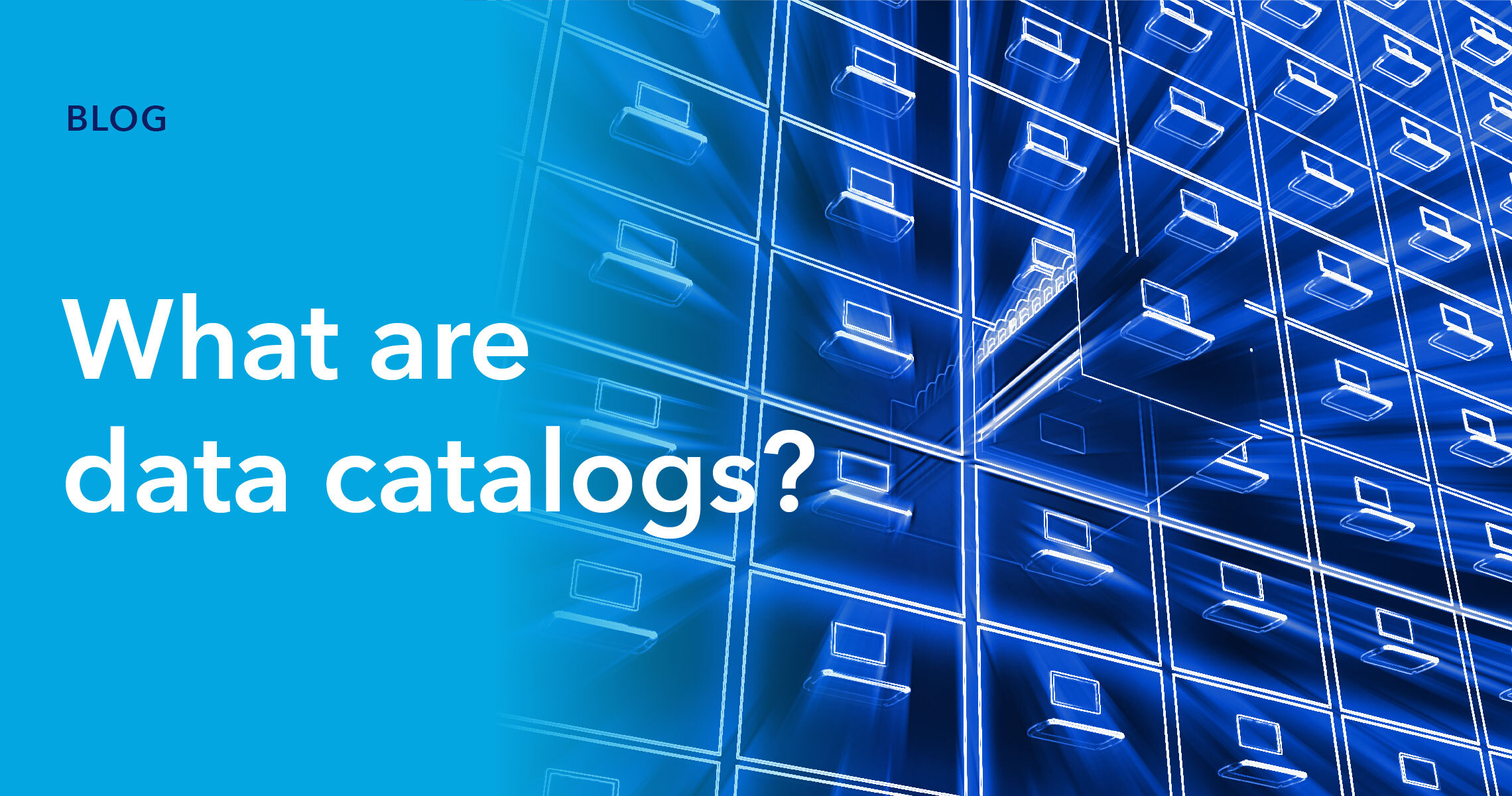A data catalog is a database of information about data assets. This descriptive information, known as metadata, allows data scientists and data functions to more easily locate and access the precise data they need. Here are some common types of technical and user-defined metadata about a data asset:
- File size
- Date created or modified
- Number of records, rows, or columns
- Source of data
- Types of schema, partition, or table
- Owner of data
- Business titles (such as sales_pending, vendor_name, etc.)
Data catalogs allow much quicker data discovery, as data searches can simply be filtered by the desired term or attribute. This is especially important with the exponential increase in corporate data collection and storage. Most organizations now host vast quantities of data that’s often dispersed among many different on-site or cloud storage locations.
Without data catalogs, it is harder to find specific stored data and to classify incoming data correctly. In other words, it becomes more difficult to prevent on-demand data lakes from becoming inaccessible data swamps.
The advantages of data catalogs
Since data analysts spend 76% of their time locating, accessing, and preparing data, data catalogs have a clear use case for all businesses looking to maximize their data ROI. Below are some of the biggest advantages that an effective data catalog delivers.
Faster data discovery
Before DataOps can perform analysis, they need access to the right data. This can be challenging, particularly if the data is located across dozens of storage locations. Not only that, but without a clear taxonomy or classification system, different functions might label the same types of data differently, making it even more difficult for analysts to find what they need. An effective data catalog allows for simple searches and filtering across all of an organization’s data assets while also imposing a taxonomic system that standardizes all metadata to simplify data discovery.
Data curation
The role of the data analysis function is to provide useful insight to people who can use it. Data catalogs facilitate this by enabling analysts to curate specific datasets for downstream users so that they receive exactly what they need without having to search or request permission for it themselves.
Data governance
Data catalogs empower an organization’s data governance function by giving them a clear picture of what data is held, where it is stored, and who has access and ownership of it. In addition, data catalogs make it easier for data governance protocols to be implemented, as it provides a framework that all users can understand. For example, administrators might outline that all data carrying a specific tag (such as ‘customer_name’) is not copyable or shareable.
Regulatory compliance
Regulations regarding data usage and safety introduce significant risks and obligations to a company’s data function. Maintaining an effective data catalog helps ensure compliance through better classification of data. For example, data that has received consent for internal use but not for sharing with third parties can be so-labeled and excluded from any action that would result in it being shared.
Easier data integration
Whether with partners or internal ecosystems, data catalogs make data integration easier. The clear taxonomy of a data catalog means that whoever is performing the integration can easily, even automatically, filter data with common characteristics and purposes to the same locations.
Monitoring data quality
As data collection grows, data duplication, obsolescence, or incompatible formats can arise. By utilizing AI, a data catalog can be regularly checked for quality issues, which can then be addressed through cleaning, unification, or standardization. Maintaining a consistent level of data quality also allows for greater continuity between data functions and when engaging in collaboration.
Data auditing
A data catalog can provide a useful audit trail of when data was last used or who had access to it in the case of a data breach. It also allows mistakes in collection or labeling to be identified and remedied more quickly, creating a smoother identification and correction process.
How to deploy or improve your data catalog
With data collection and usage growing exponentially, a data catalog isn’t just a helpful feature — it’s essential. The search and filtering capacity alone can save significant time for your data function’s resources. However, the deployment and maintenance of a data catalog takes time and involves high initial expenses, not to mention the recurring costs of resources overseeing the catalog.
A solution to this is using a data virtualization platform that creates a virtual data layer across all your data, wherever it is stored. With virtualized data, organizations can automatically generate a large amount of the metadata needed for the catalog, with fewer resources required to fill in the user-defined terms specific for its usage. The data catalog then functions seamlessly with the data platform’s main function: locating and gathering data for secure analysis without ever having to move it from its original location.
Intertrust Platform has already helped organizations worldwide, including one of the world’s biggest automakers, improve their data operations by creating data catalogs. Our platform helped them integrate multi-source and historical data assets to create a single source of truth that was easily searchable and allowed for the rapid identification of trends, enabling them to move towards a data-driven business model.
To find out how Intertrust Platform can deliver a drop-in data catalog solution to speed up your data discovery and management while ensuring compliance and adding to your sales tools, you can read more here or talk to our team.
About Abhishek Prabhakar
Abhishek Prabhakar is a Senior Manager ( Marketing Strategy and Product Planning ) at Intertrust Technologies Corporation, and is primarily involved in the global product marketing and planning function for The Intertrust Platform. He has extensive experience in the field of new age enterprise transformation technologies and is actively involved in market research and strategic partnerships in the field.




